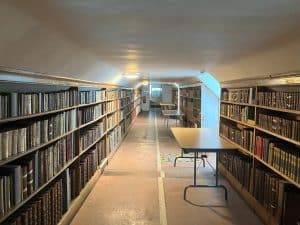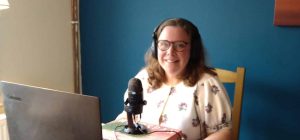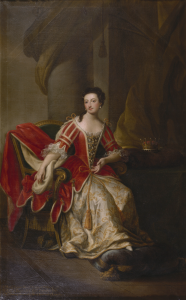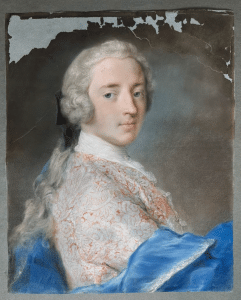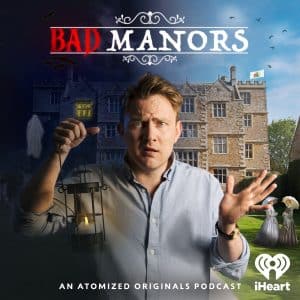Walking in the Footsteps of Thomas Coke
May 11, 2020 | Treasure tales and archive snippets | 6 minute read
As Archivist at Holkham I come across all manner of exciting and interesting documents relating to life at Holkham and part of my role is to share this information more widely. For the 2018 season, it seemed only fit that the Hall exhibition should celebrate the 300th anniversary of the safe return of Thomas Coke from his epic, six-year grand tour through Europe. The key document that to look at his trip is the careful kept account book of his accountant, Edward Jarrett. Although financial records are not normally known to set the heart racing, to this archivist, they are quite thrilling.
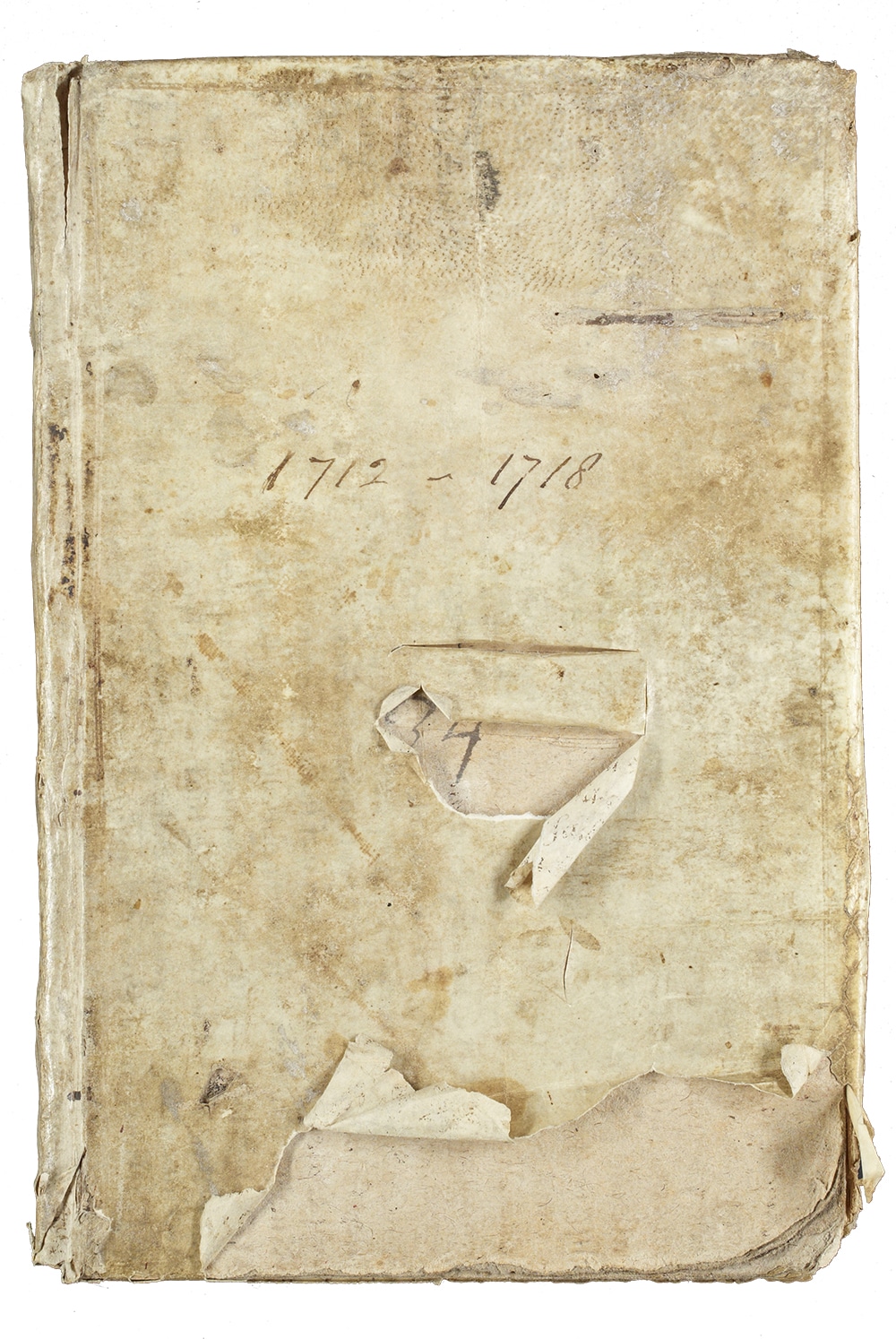
The account book of Thomas Coke’s grand tour
Hidden within the pages of this unassuming volume are all the day-to-day dealings of the youthful Thomas Coke travelling with his tutor, Dr Hobart, across Europe. We learn about his fondness for chocolate (drunk), bread and butter, tea, brandy and wine which were clearly familiar to Edward, who noted in great detail the extents consumed most days. Similar too are his entries dedicated to the dressing of Thomas and his servants in appropriate garb.
What is not so clearly understood by Edward is Thomas’s extensive souvenir buying. It is clear Thomas, with the guidance and knowledge of Dr Hobart had an agenda of what sort items he would like to acquire on his cultural safari. Yes, Edward still records it, but the detail is missing, often it’s just recorded as ‘3 pitures’ or ‘books’ and the price. So, it is really hard to work out what was bought when. It’s only by using contextual sources that can help solve the hints given in the account book. There are details of Thomas’s learning whilst abroad; there are regular payments to various tutors, dancing, fencing, and music. I particularly like the entry when in Angers in May 1713: ‘Paid for 2 flutes and a flagiolet’ (a type of wind instrument) and the subsequent entry ‘Paid for a trompet marine that was broke’ (a really weird single-string bass instrument that would have been an antique even to Thomas) . Interestingly is the following entry for the mathematical book that Thomas was paying to be copied.

In September 2019 I was very fortunate to attend The Attingham Trust Study Programme 2019: The Palaces and Villas of Rome and Naples. Accompanied with art historians, curators, collectors, conservators and archaeologists working in Europe and America, we visited with expert guides the places visited by Grand Tour tourists of the eighteenth and nineteenth centuries.
By knowing Thomas’ itinerary though the account book, I knew that I was following his excursions. The trip to the Capitoline Museum was particularly momentous. I knew that Thomas Coke had been to the museum and that he would have seen the same things that I was viewing and, more importantly, most of the exhibits had not been moved around in the intervening three centuries. Was it the statuary here that prompted his need to collect statues for his Temple to the Arts?
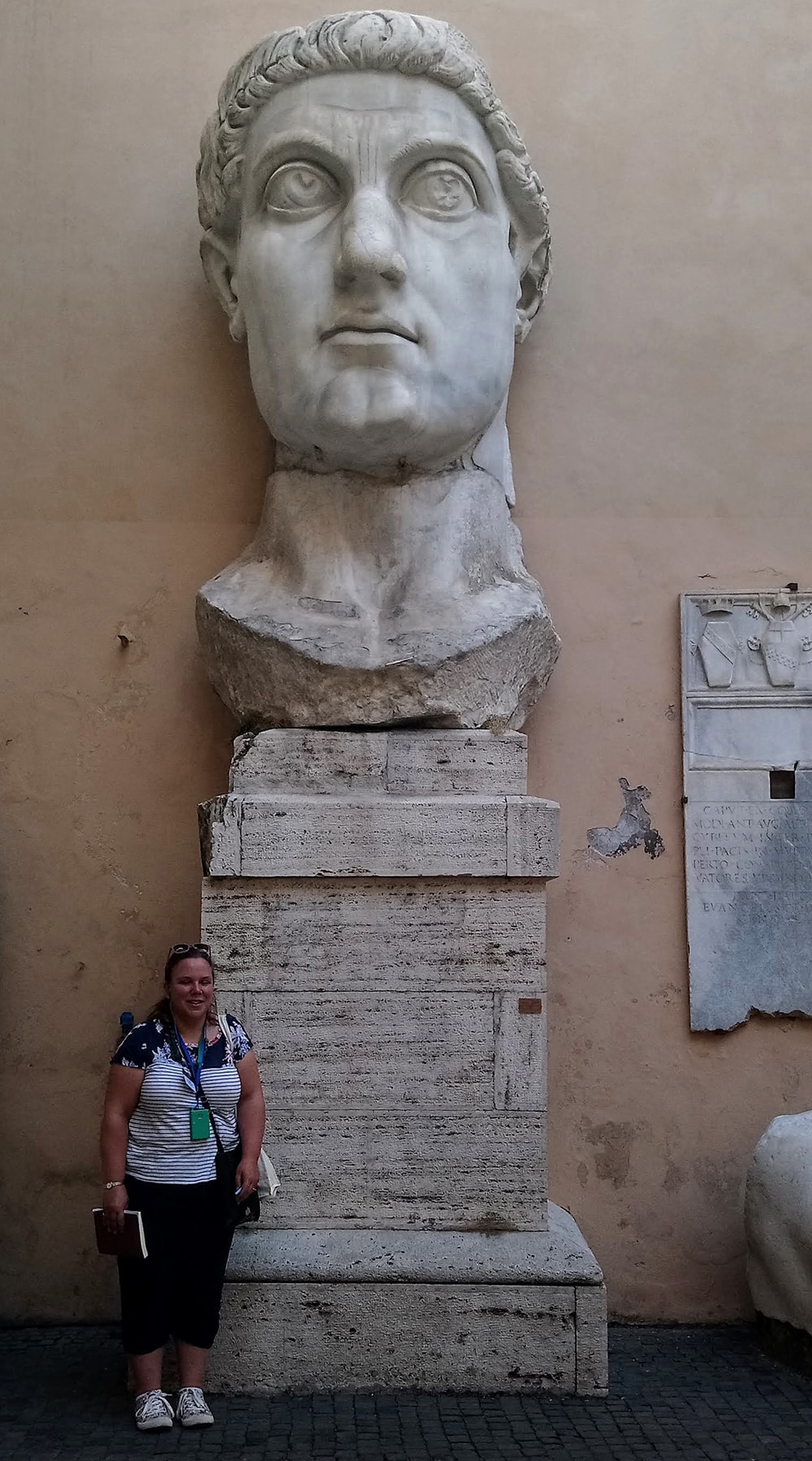
Me following Thomas to the Capitoline Museum
The Attingham Trust has an uncanny ability to open doors normally left tightly shut. We visited the sumptuous private palaces and villas of the great Roman families such as the Albani-Torloni, Farnese, Colonna, Boncompagni Ludovisi, Pallavinci-Rospigliosi, Capodiferro and Doria Pamphilj. Again, these were places mentioned in the account book as receiving payment. Thomas visited these places to perhaps study the architecture or view their art collections or read in the private libraries and he would frequently tip the servants. I could see easily how Thomas would want to curate his own beautiful collection that would reflect those he had studied on his journey.
The visit to the Colonna Palace struck me as particularly momentous. There are a number of entries in the accounts that confirm that Thomas visited the palace. On the ground floor, in the Princess Isabelle Apartment there is room containing 37 pictures by Vanvitteli. Might Thomas have seen some of these and wanted to have some to take home? After all there are entries in the account book that detail the works he bought by Vanvitteli.
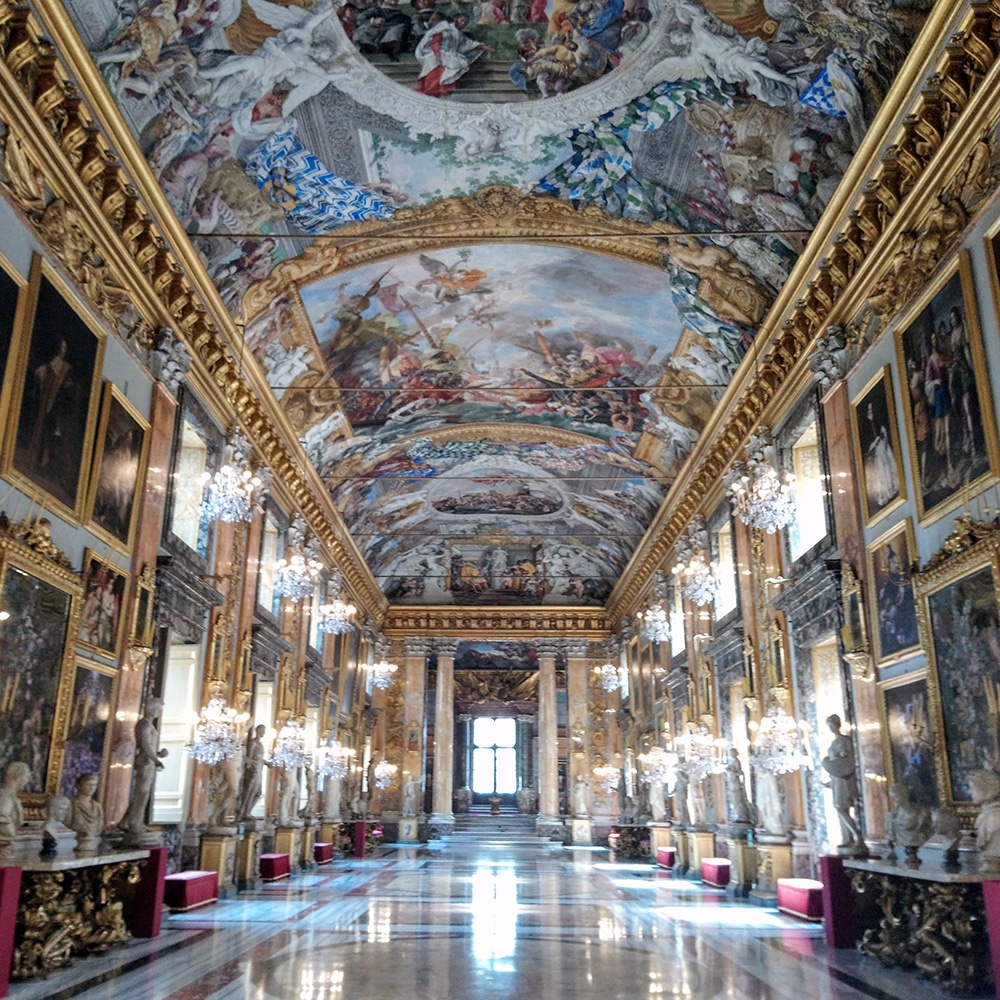
The Colonna Gallery
It was in the Colonna Gallery where I am convinced Thomas must have spent some considerable time and been influenced by what he saw. This Great Hall is a sumptuous golden gallery designed to have the ultimate ‘wow factor’ with its mirrors and priceless works of collections. It was used at the end of Roman Holiday staring Audrey Hepburn and Gregory Peck. It still has the same hanging since 1703, so again what I was seeing was exactly what Thomas had seen. It was such a thrilling experience.
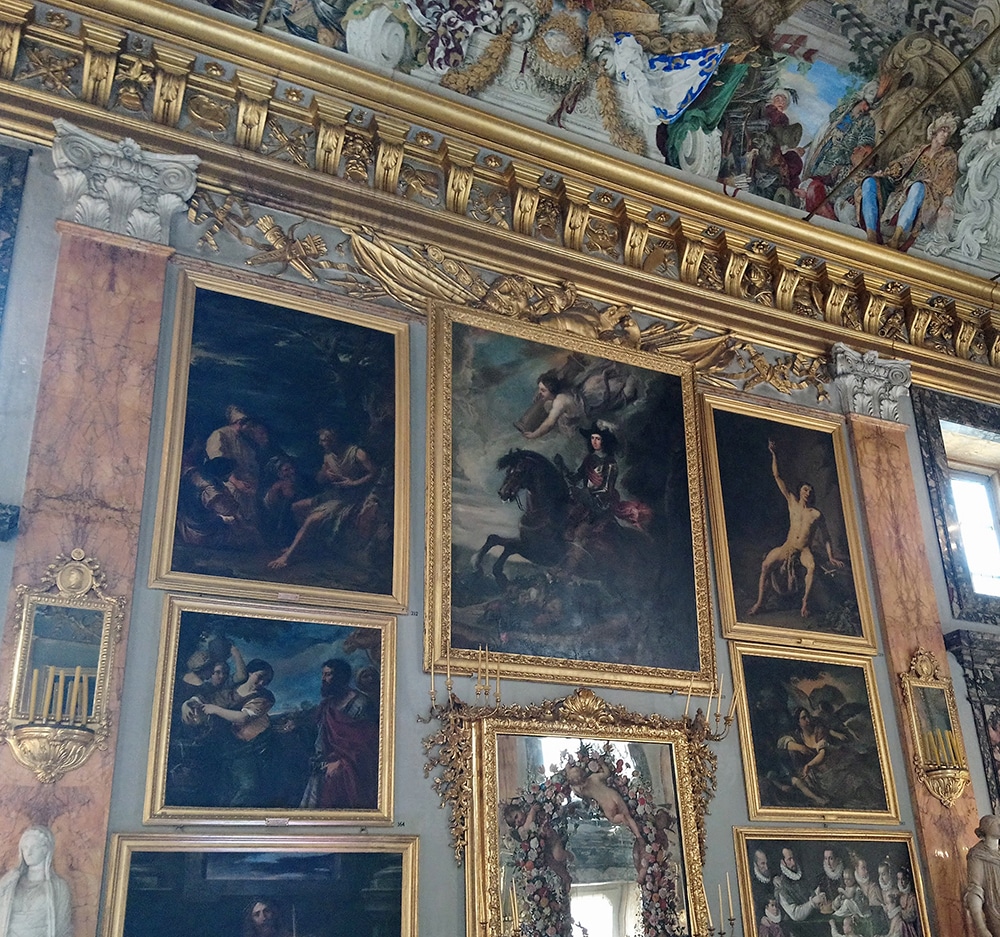
The ultimate ‘Wow Factor’
As I was walking through the gallery, my eye was drawn to a group of seven paintings arranged around beautiful painted mirror. In the centre is a work that seemed very familiar to Holkham. I was stunned to see a work attributed to Van Dyck of a man on a horse. The positioning of this large painting above a large painted mirror ensured that this was the focus of this group of masterpieces. It immediately made me recollect the last major purchase of Thomas Coke on his way back to England, a similar sized Van Dyck ‘Duke of Arenberg’ picked up in Paris for 4,500 Livres (approx. £40,000 in modern money) and was the focal point to his design of the Saloon at Holkham.
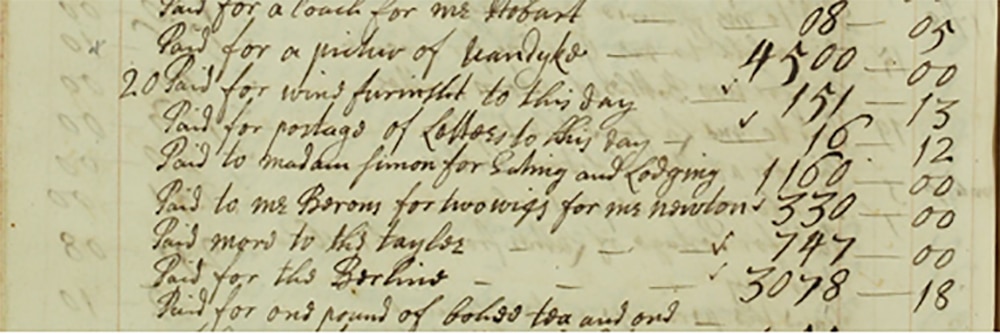
The record of Thomas’s purchase of the Van Dyck in the Saloon
Could it be coincidence or did Thomas see it when visiting the Colonna Palace and want to recreate the effect at home? We will never know exactly what drove Thomas to make this final art purchase, but I’ll keep looking through the archives for more clues.
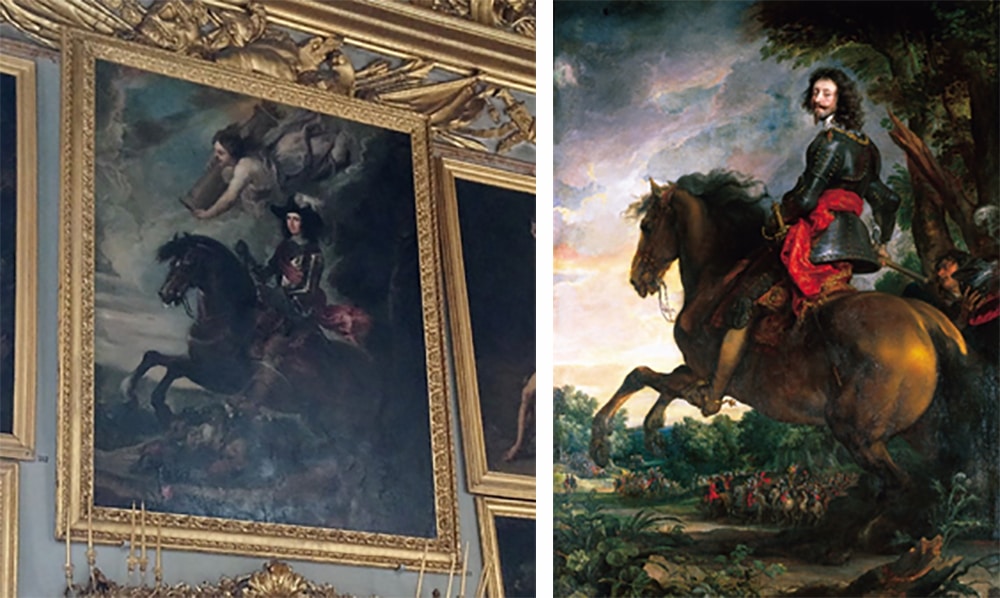
Left: The Van Dyck in the Colonna Palace. Did this inspire the purchase of the Van Dyck in the Saloon at Holkham (right)?
View all latest blog posts here.
Back to Journal Back to Journal